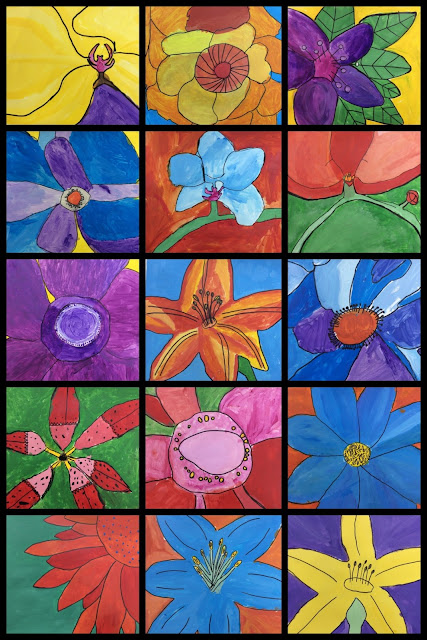This unit of inquiry is designed for Grade 2 students but could be easily adapted to fit any grade level. The unit focuses on observational drawing skills, composition, color theory, investigating different drawing materials, and discussing contemporary artists and their work for inspiration. The transdisciplinary theme is under How We Organize Ourselves with the central idea "investigation leads to possibilities."
At the beginning of the unit we started tuning in by discussing what drawing is and as a class how we felt about it. Many students shared that they thought drawing "the right way" was very hard. In order for all students to feel successful and be accepting of the fact that everyone is at different levels in the artistic process, we watched this beautifully done video called Austin's Butterfly.
The Grade 2 students really related wonderfully to this video. I paused the clip after each of Austin's draft drawings and the students discussed what could be done better in order to keep trying and "get it right". After numerous discussions during and after the video, the students agreed that they were all capable of improving their drawing skills. As a class it was agreed that they should stay positive and open minded, provide each other with constructive feedback, and keep trying even if they made mistakes. I really emphasized that mistakes are okay, part of the learning process, and that even though they are attempting to capture real life observations, their drawings did not have to be perfect. Perfection was not our goal, only improvement and practicing new skills!
After a lesson of discussion and simple practice drawings, the students started investigating the first focus artist for this unit. Together we watched a short video clip about Georgia O'Keeffe and talked about her famous flower paintings. The students observed that the flowers filled the page and were bright and colorful.
We then began discussing color theory and how colors can impact an artwork. The students learned about complementary and analogous color groupings, filling out the sheet below as a reference for their sketchbooks.
They then chose a flower from a stack of photographs that they found interesting and began doing practice drawings. The students focused on the outside lines and shapes they could see within their flower, avoiding small and complicated details. The students were encouraged to sketch their flowers large and go off the page.
After practicing color theory and flower drawings in their sketchbooks, Grade 2 students were ready to start their final paintings on large pieces of paper. The students drew their flower first and painted their drawing in by blending analogous colors. They chose the complementary color of their flower to paint the background. Aren't these beautiful!
*Another version of these beautiful flower paintings can be found on Paint Brush Rocket, which is what inspired the first part of this unit.
Once their flower paintings were complete, Grade 2 students began investigating artworks by contemporary artist Anna Valdez through discussions and See, Think, Wonder activities. Together we focused on composition and how to set up a still life using the rule of thirds.
Grade 2 students then chose 2-4 objects in the art room to set up their very own still life to draw from. Again they were encouraged to draw large and focus on what they observe. When their objects were complete they added a fun background of their choice, inspired by Valdez's constant use of bright patterns within her work. The students used water color pencils and ink pens to complete these amazing still life drawings.
Throughout this unit the students gained creative confidence and remained resilient while experimenting with different drawing materials and improving their observational skills. They loved learning about inspiring artists and realized the many possibilities that observational drawing has to offer. The students are very proud of their final work!















No comments:
Post a Comment